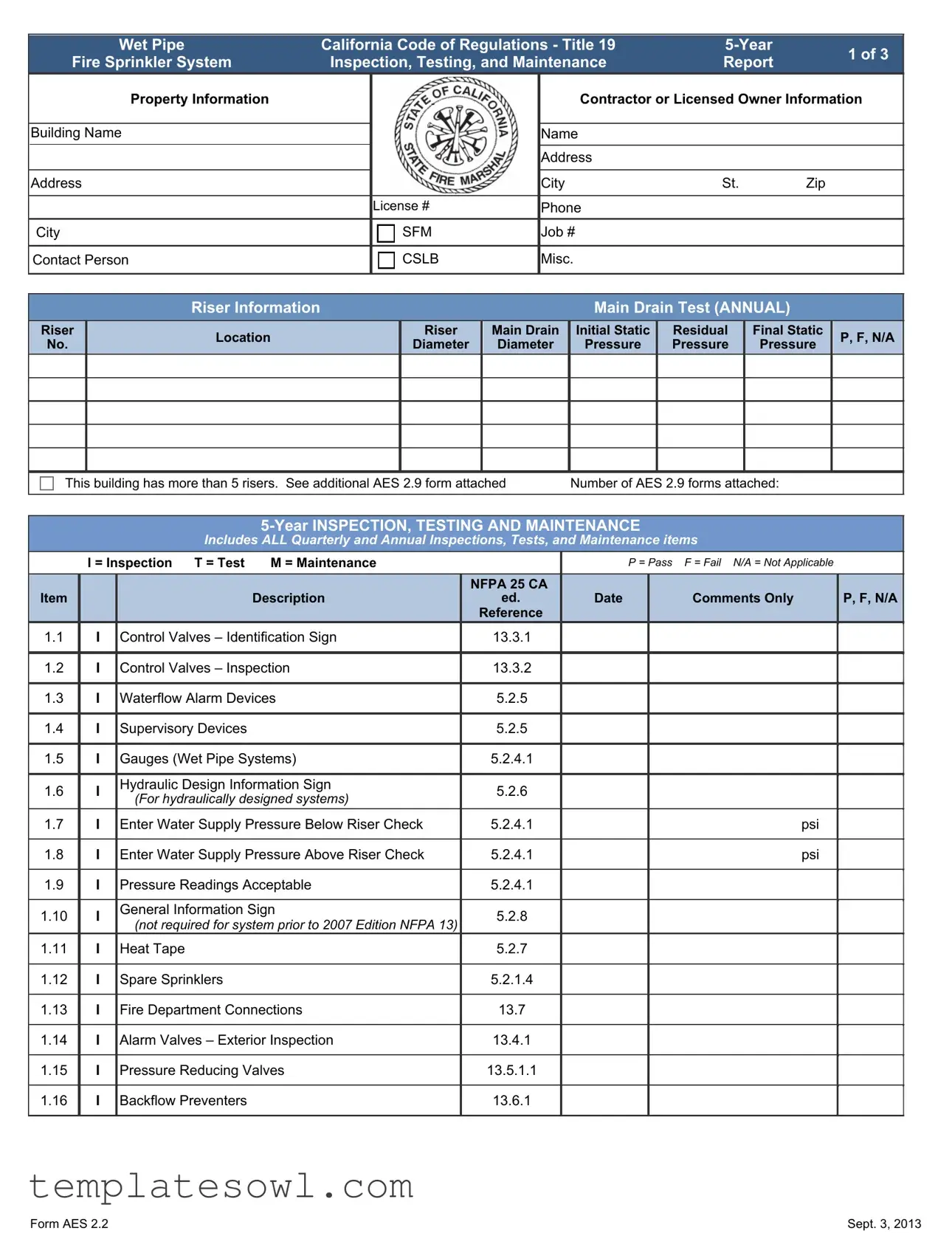What is the purpose of the 5 Year Fire Sprinkler Inspection form?
The 5 Year Fire Sprinkler Inspection form is essential for documenting the inspection, testing, and maintenance of fire sprinkler systems. This form ensures compliance with regulatory standards and helps maintain the safety and functionality of fire protection systems in buildings.
Who is qualified to fill out this form?
This form should be completed by a licensed contractor or a qualified individual responsible for inspecting fire sprinkler systems. Their expertise ensures that all tests and maintenance activities are performed correctly and that the system meets the necessary safety standards.
What information is required on the form?
Key pieces of information needed include property details like the building name, address, and city, along with the contractor’s contact information. The form also requires inspection results for various components of the sprinkler system, including control valves, water flow alarms, and backflow preventers.
How often should the inspection be performed?
The inspection should be conducted every five years. However, routine inspections and testing occur quarterly and annually. All findings and maintenance activities should be accurately recorded in the form to ensure ongoing compliance and safety.
What happens if a failure is noted during inspection?
If any component fails the inspection, it's crucial to address the issue immediately. The form allows for the documentation of deficiencies and the necessary corrective actions. Repairs or replacements must be conducted before the fire protection equipment can be deemed operable.
Is there a specified deadline for submitting the completed form?
While the form does not explicitly state a submission deadline, it is advisable to submit the completed inspection report promptly after the evaluation. This helps ensure that any issues are logged and addressed while they are still fresh in records, maintaining compliance and safety.
Can I attach additional comments or documentation?
Yes, if there are additional comments or documented deficiencies, you can attach extra sheets, like Form AES 9, to provide more detail. Ensure that all necessary documentation accompanies the submission so that complete records are maintained for future reference.



